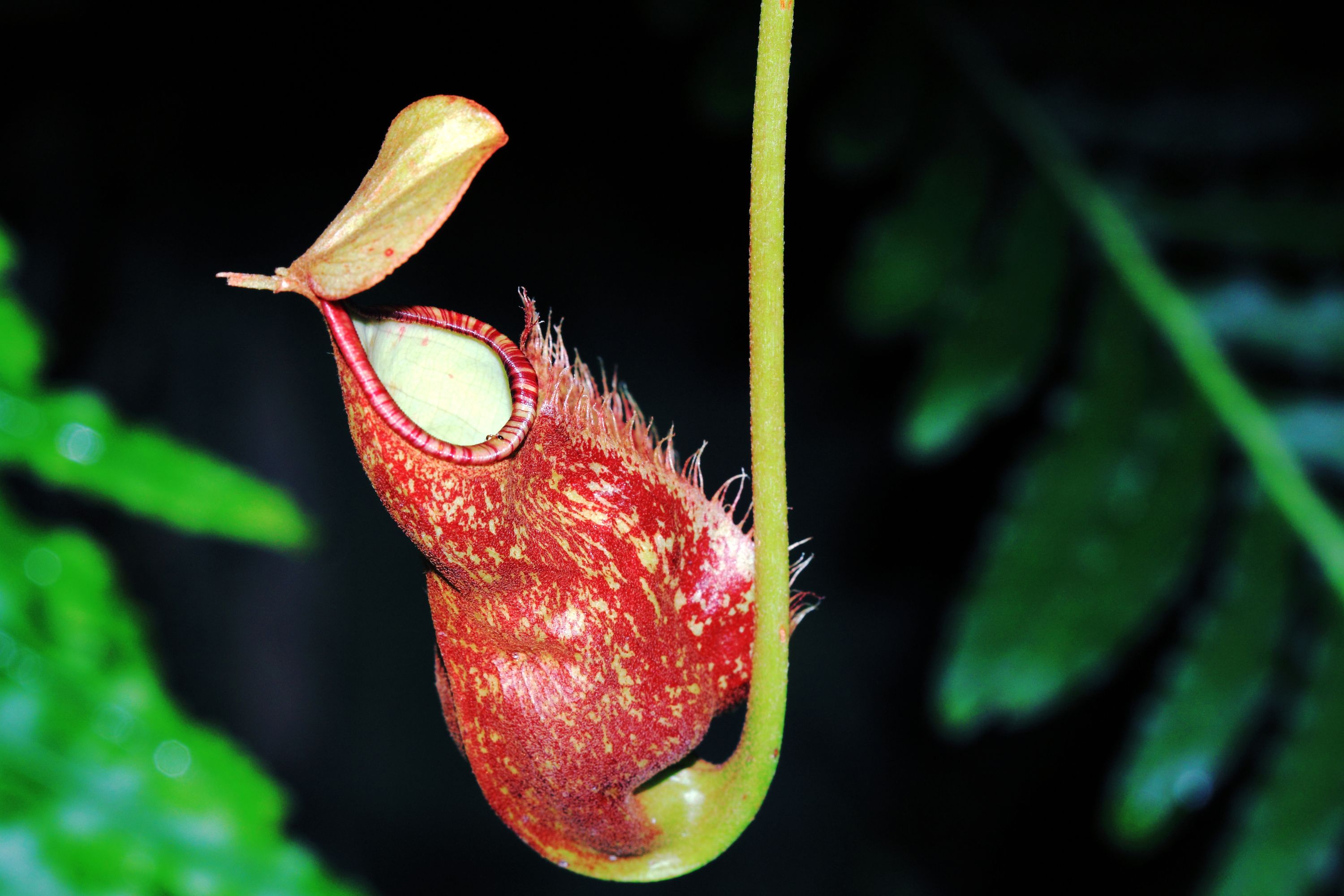Tropical pitcher plant
(Nepenthes sanguinea)

Description
Nepenthes sanguinea is a large and vigorous Nepenthes pitcher plant species, native to Peninsular Malaysia and southernmost Thailand, where it grows at 300–1800 metres (1000 to 6000 feet) altitude. The pitchers are variable in size, from 10–30 cm (4 to 12 inches) tall, and range from green and yellow to orange and red. The insides of the pitchers are usually speckled with its two main colors. It was introduced to Victorian Britain around 1847 by Cornish plant hunter and botanist Thomas Lobb via the Veitch Nurseries. This highland pitcher plant can be grown on a windowsill or in partly shaded areas outside, as well as in a terrarium, provided that it is large enough to accommodate this Nepenthes. Nepenthes is a genus of carnivorous plants, also known as tropical pitcher plants, or monkey cups, in the monotypic family Nepenthaceae. The genus comprises about 170 species, and numerous natural and many cultivated hybrids. They are mostly liana-forming plants of the Old World tropics, ranging from South China, Indonesia, Malaysia, and the Philippines; westward to Madagascar (two species) and the Seychelles (one); southward to Australia (four) and New Caledonia (one); and northward to India (one) and Sri Lanka (one). The greatest diversity occurs on Borneo, Sumatra, and the Philippines, with many endemic species. Many are plants of hot, humid, lowland areas, but the majority are tropical montane plants, receiving warm days but cool to cold, humid nights year round. A few are considered tropical alpine, with cool days and nights near freezing. The name "monkey cups" refers to the fact that monkeys were once thought to drink rainwater from the pitchers. This is false; monkeys do not drink from them, and the pitchers are filled with digestive juices, rather than rainwater. Nepenthes species usually consist of a shallow root system and a prostrate or climbing stem, often several metres long and up to 15 m (49 ft) or more, and usually 1 cm (0.4 in) or less in diameter, although this may be thicker in a few species (e.g. N. bicalcarata). From the stems arise alternate, sword-shaped leaves with entire leaf margins. An extension of the midrib (the tendril), which in some species aids in climbing, protrudes from the tip of the leaf; at the end of the tendril the pitcher forms. The pitcher starts as a small bud and gradually expands to form a globe- or tube-shaped trap. The shapes can evoke a champagne flute or a condom.
Taxonomic tree:







